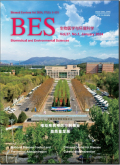Hand Hygiene among Anesthesiologists and Microorganisms Contamination in Anesthesia Environments: A Single-Center Observational Study
摘要Objective To investigate the baseline levels of microorganisms' growth on the hands ofanesthesiologists and in the anesthesia environment at a cancer hospital. Methods This study performed in nine operating rooms and among 25 anesthesiologists at a cancerhospital. Sampling of the hands of anesthesiologists and the anesthesia environment was performed ata ready-to-use operating room before patient contact began and after decontamination. Results Microorganisms' growth results showed that 20% (5/25) of anesthesiologists' hands carriedmicroorganisms (> 10 CFU/cm2) before patient contact began. Female anesthesiologists performed handhygiene better than did their male counterparts, with fewer CFUs (P = 0.0069) and fewer species (P =0.0202). Our study also found that 55.6% (5/9) of ready-to-use operating rooms carried microorganisms(> 5 CFU/cm2). Microorganisms regrowth began quickly (1 hour) after disinfection, and increased gradually over time, reaching the threshold at 4 hours after disinfection. Staphylococcus aureus was isolated from the hands of 20% (5/25) of anesthesiologists and 33.3% (3/9) of operating rooms. Conclusion Our study indicates that male anesthesiologists need to pay more attention to thestandard operating procedures and effect evaluation of hand hygiene, daily cleaning rate of the operating room may be insufficient, and we would suggest that there should be a repeat cleaning every four hours.
更多相关知识
- 浏览12
- 被引1
- 下载2


相似文献
- 中文期刊
- 外文期刊
- 学位论文
- 会议论文



 换一批
换一批 换一批
换一批



